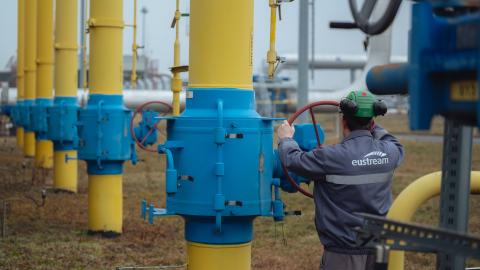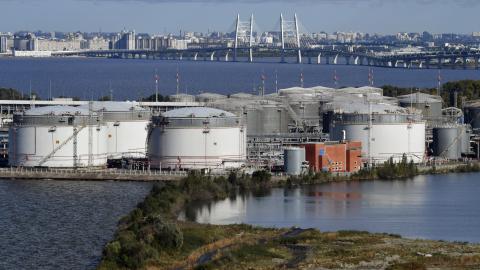The North Koreans appear to be preparing to test yet another missile, at any time, this one with a potential range that would put the entire United States—from Los Angeles to New York City—within reach. Last Sunday, Secretary of Defense Ash Carter said on Meet the Press that the United States was prepared to shoot down the North Korean missile "if it were coming towards our territory or the territory of our friends and allies." While the United States has confidence that it possesses the capability to shoot down this particular threat, it would be wise not to get too comfortable with the country's current defensive capabilities. The missile threats from hostile countries is growing more complex. It's important to look at the full spectrum of potential options to slow the development of hostile nations' missile capabilities, but one of the responses to this threat, especially one as unpredictable as emanating from North Korea, must be for the United States to significantly improve and expand the U.S. missile defense system.
Important political consensus has been forming that makes this response entirely feasible for the incoming Trump administration. President Obama signed the FY17 National Defense Authorization Act, codifying a substantive change in strategic policy to adapt to the modern era of missile threats. The National Missile Defense (NMD) Act of 1999 sought to protect the American homeland from a "limited" missile defense threat, implying that the United States would defend itself only against rogue-state missile attacks and not the more sophisticated missile attacks that near-peer competitors could launch. The old policy is outdated and has been overcome by events. Recognizing its inadequacy, Congress adopted two different amendments to the NDAA offered by Rep. Trent Franks (R-AZ). One amendment changed the policy from developing a "limited" defensive system to developing a "robust" one, and the other amendment encourages the Pentagon to begin work on a space-based missile defense layer.
There are several reasons why the changes are necessary. Rogue nations Iran and North Korea continue their missile programs apace, and due to leaps in technological advancement, the gap between what policymakers once considered "limited threats" and more "complex threats" has diminished. North Korea has brazenly carried out nuclear and missile tests, including four nuclear tests during Obama's presidency, despite United Nations Security Council Resolutions that forbid such tests. The North's satellite launches, especially the most recent one in February, given further evidence that Pyongyang is mastering the technology to launch a missile of intercontinental range. While intelligence assessments differ, the Defense Intelligence Agency and the former head of Northern Command believe that if the North Koreans decided to launch a nuclear weapon at the United States, it is likely they could do so.
Meanwhile, the Iran deal lifts binding prohibitions on Iran's missile tests, and Tehran has not waited to exploit this new opportunity. It continues enhancing its missile technology and is working to extend the range and reliability of its long-range missiles. Moreover, the deal has not had a moderating effect on the regime, and according to Iran's Fars News Agency, at least some of the test missiles are marked with the foreboding words, "Israel must be wiped off the earth." Iran's increasing capabilities, combined with its unacceptable national goals, are further destabilizing an already volatile region. Other nations in the region are tempted to build up their own conventional capabilities in response to Iran's buildup, and some might even be tempted to gain their own nuclear capability in anticipation of an Iranian nuclear weapon capability.
Rogue nations are not the only ones investing in missiles. Russia and China are aware of the limits to our defenses and have been working diligently to perfect capabilities to reliably overcome them. Their high-speed maneuvering weapons (HSMWs) can travel at five times the speed of sound and traverse at trajectories, altitudes, and speeds designed to exploit the gaps in our defenses. These new weapons include maneuvering ballistic missiles able to change course mid-flight, anti-ship missiles capable of bypassing the Navy's missile defense systems, and direct ascent anti-satellite (ASAT) missiles designed to take out our space assets. Media reports show Russia flight-tested an ASAT as recently as early December.
President-elect Trump has already wisely expressed his support for the U.S. missile defense mission, and there is much to do to aggressively restore and improve our missile defense architecture to move from a "limited" defense that only protects against some kinds of missile threats to a "robust" defense that is far more capable with the ability to counter the modern, most challenging kinds of missile threats.
This includes developing predictable plans for maintaining and resourcing our interceptor stockpiles based on the stated needs of our combatant commanders; moving forward with constructing the third homeland missile defense site (this system is called Ground-based Midcourse Defense) without delay; improving our discrimination capabilities, and countering the hypersonic threat. And, to give us the greatest qualitative improvement, we must deploy a more substantive space-based sensor layer, and begin development of a space-based missile defense intercept capability.
The old arguments against an expansive, robust missile defense system are outdated. Missile defense technology has improved dramatically over the years, and we can build on those capabilities in a way that is prudent and affordable. In fact, a quick glance at the pace at which the missile threats across the globe are increasing should lead us to conclude we cannot afford not to.












